Blogs

Understanding Nickel Corrosion Resistance: A Complete Tutorial on Alloys and Applications
Introduction
Nickel and its alloys stand at the forefront of modern materials science, celebrated for their remarkable properties that cater to a wide array of industrial applications. With unparalleled corrosion resistance and mechanical strength, nickel alloys like Inconel and Monel are indispensable in sectors ranging from aerospace to marine engineering.
As industries evolve and demand for advanced materials continues to rise, understanding the unique characteristics and applications of these alloys becomes crucial for procurement professionals. This article delves into the essential properties of nickel, the mechanisms behind its corrosion resistance, and the best practices for sourcing these vital materials.
By exploring current trends and future innovations, procurement managers will be equipped with the insights necessary to make informed decisions that align with their strategic objectives and industry standards.
Introduction to Nickel and Its Alloys: Properties and Applications
Nickel is a highly adaptable metal famous for its outstanding durability against deterioration, which highlights its nickel corrosion resistance, making it a favored option in various sectors. Nickel combinations, including Inconel and Monel, are particularly esteemed for their strength and nickel corrosion resistance, even in extreme environments. These alloys find extensive applications in sectors such as:
- Chemical processing
- Aerospace
- Marine engineering
- Electronic components
Our offerings at Domadia, including pure metal sheets, rods, and custom components, cater to these diverse needs.
The electrical resistivity of this metal, measured at 0.096 x 10⁻⁶ ohm.m, further underscores its conductive properties, making it suitable for various technological applications. Additionally, this metal is often used as an undercoat in decorative chromium plating to enhance nickel corrosion resistance, showcasing its critical role in improving product longevity. Understanding the key properties of this metal, such as its high melting point and its capability to endure elevated temperatures, is crucial for procurement professionals engaged in material selection.
Domadia stands out as a leading supplier of pure metal, committed to unparalleled quality assurance and competitive pricing. Our Tungsten Copper W80Cu20 is priced at 1,890.00, ensuring you receive the best value. Amelia, a satisfied client, noted, ‘The customer service staff is very patient and has a positive and progressive attitude to our interest, so that we can have a comprehensive understanding of the product and finally we reached an agreement, thanks!’
Current statistics indicate a significant rise in the usage of this metal within industries for 2024, underscoring its critical role in modern engineering solutions. As advancements continue in nickel compounds, particularly for aerospace and marine applications, the material’s nickel corrosion resistance, adaptability, and reliability remain pivotal for fostering long-term partnerships and ensuring product quality. Additionally, we offer a range of product tags, including:
- Beryllium Copper
- Kovar
- Mu-Metal
- Nickel materials
to support your procurement needs.
For any inquiries, our dedicated customer support team is ready to assist you.
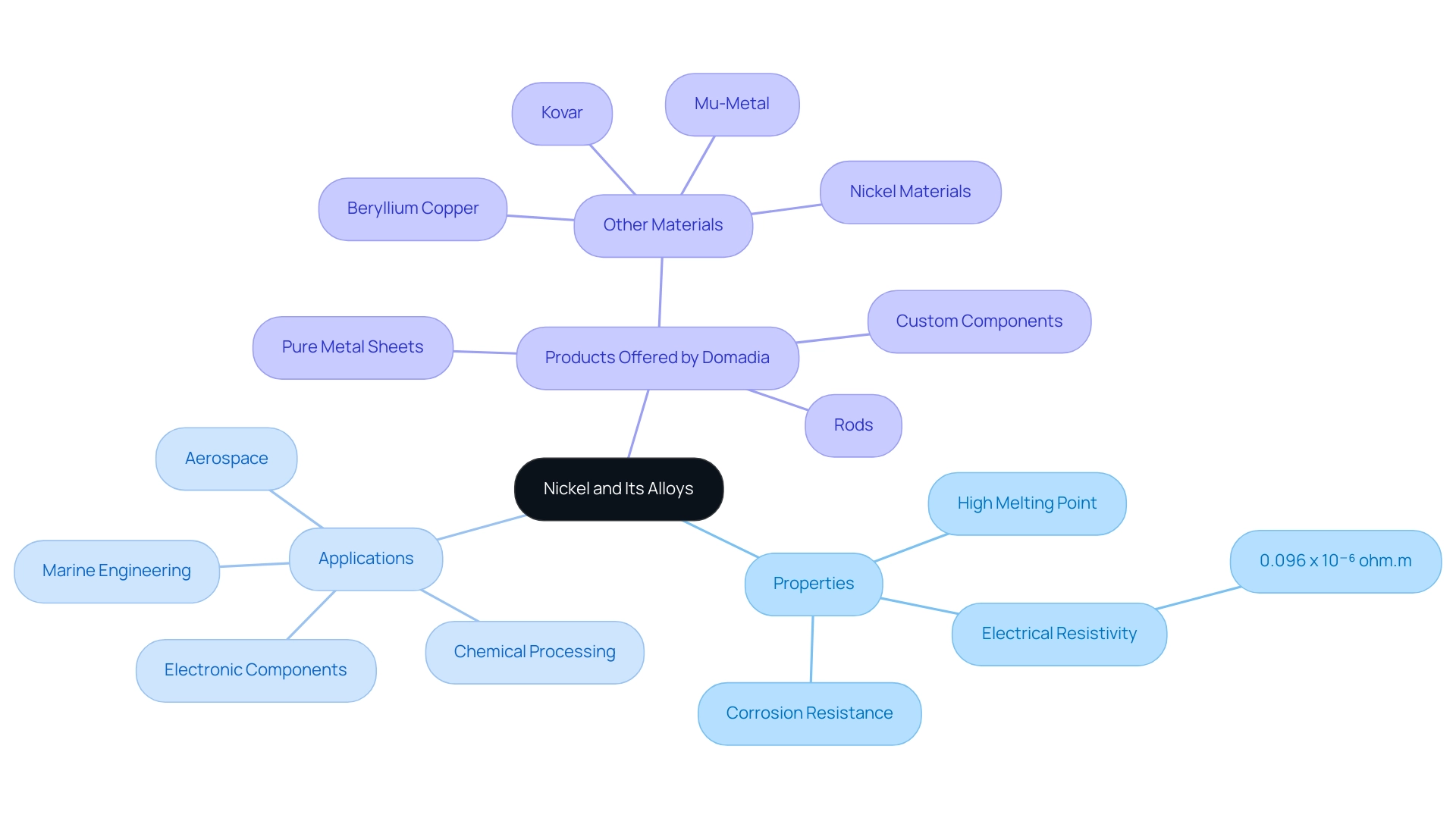
Corrosion Resistance of Nickel Alloys: Mechanisms and Factors
Nickel mixtures, particularly those provided by Domadia, demonstrate exceptional durability against deterioration, highlighting their nickel corrosion resistance through processes like the creation of a protective oxide layer and their capacity to function in various aggressive environments. The chemical makeup of the mixture, featuring elements such as chromium and molybdenum, along with the specific application environment, significantly impacts nickel corrosion resistance. For example, Domadia’s copper nickel mixtures are designed with a focus on quality and innovation, providing impressive nickel corrosion resistance, making them ideal for applications requiring durability and adherence to industry standards.
Additionally, our mica tape products provide exceptional high-temperature resistance and electrical insulation, making them indispensable in critical applications across various industries. Inconel materials are renowned for their exceptional performance in high-temperature settings, while Monel materials are preferred in marine environments for their nickel corrosion resistance against seawater. By understanding these mechanisms and selecting materials wisely, procurement managers can ensure their projects benefit from reliable and high-quality solutions.
Explore Domadia’s extensive range of copper products and mica tape offerings today to enhance your projects with assurance.
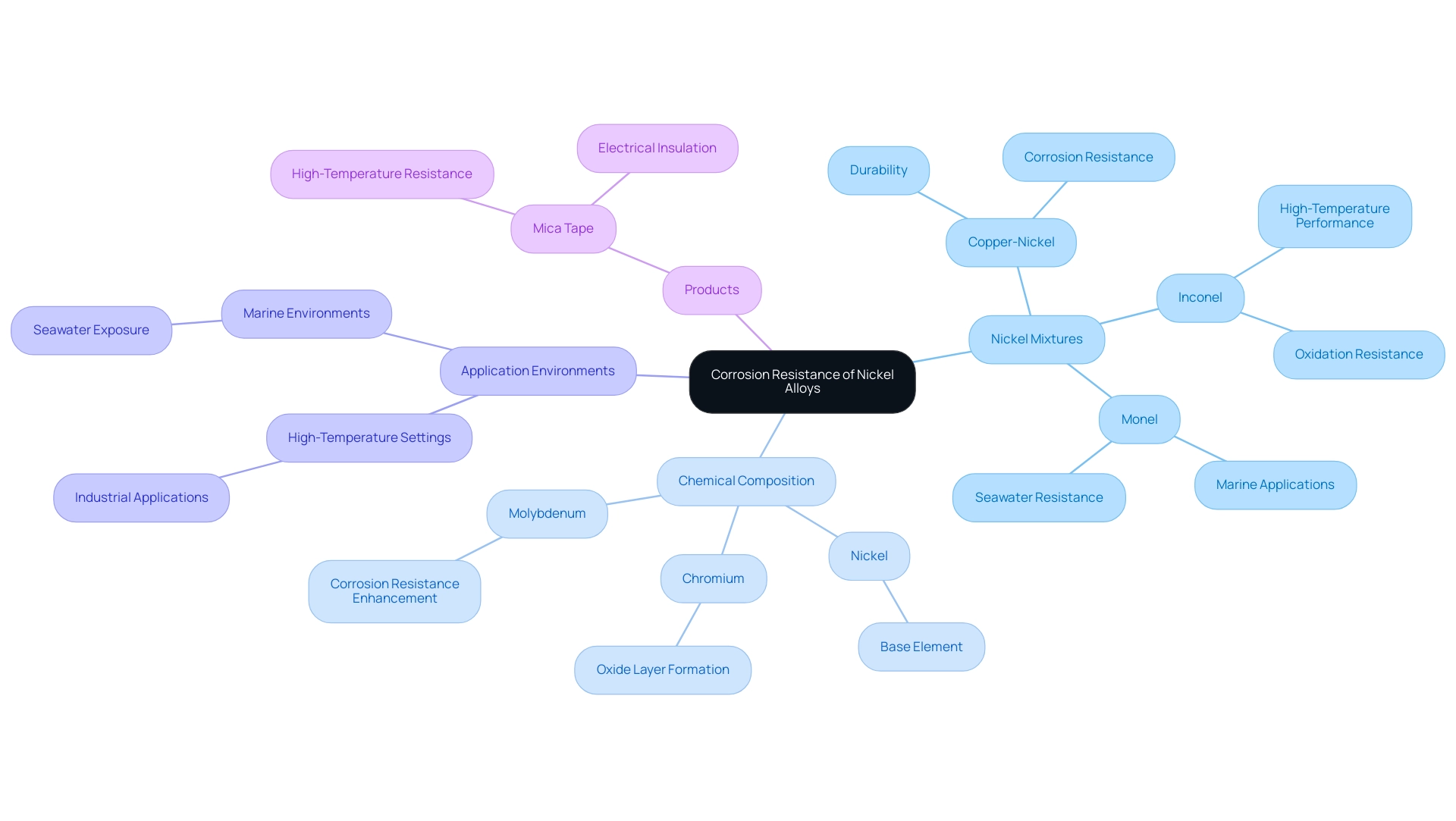
Common Nickel Alloys and Their Applications
Copper-based mixtures, encompassing the varied selection of copper-copper mixtures from Domadia, are essential to many industrial uses, each defined by unique characteristics that address particular operational requirements. Significantly, our copper nickel alloys are celebrated for their outstanding durability against deterioration, high conductivity, superb thermal and electrical conductivity, and notable nickel corrosion resistance, making them essential in fields like marine engineering and electronics. For instance, Monel 400 is a favored selection in marine uses, appreciated for its strong ability to withstand seawater damage, perfect for parts subjected to severe maritime environments.
Meanwhile, Inconel 625 is acknowledged in aerospace and chemical processing fields for its exceptional strength and outstanding durability in high-temperature conditions. Additionally, Hastelloy C-276 excels in the chemical processing industry due to its superior resistance to pitting and stress corrosion cracking. Understanding these specific properties and applications is crucial for procurement professionals, as this knowledge empowers them to select materials that not only meet project specifications but also withstand the environmental conditions they will encounter.
With recent statistics projected for 2024 indicating a significant uptick in the usage of these materials, particularly Monel 400 and Inconel 625, staying informed about advancements and market trends is essential. Moreover, the U.S. Department of Defense’s plans to develop an AI-based program to estimate prices and predict supplies of critical minerals emphasize the significance of strategic procurement in a swiftly changing environment. We invite you to explore our extensive product catalog to find the perfect solution for your project needs.
These insights ensure that procurement strategies remain aligned with industry standards and innovations.
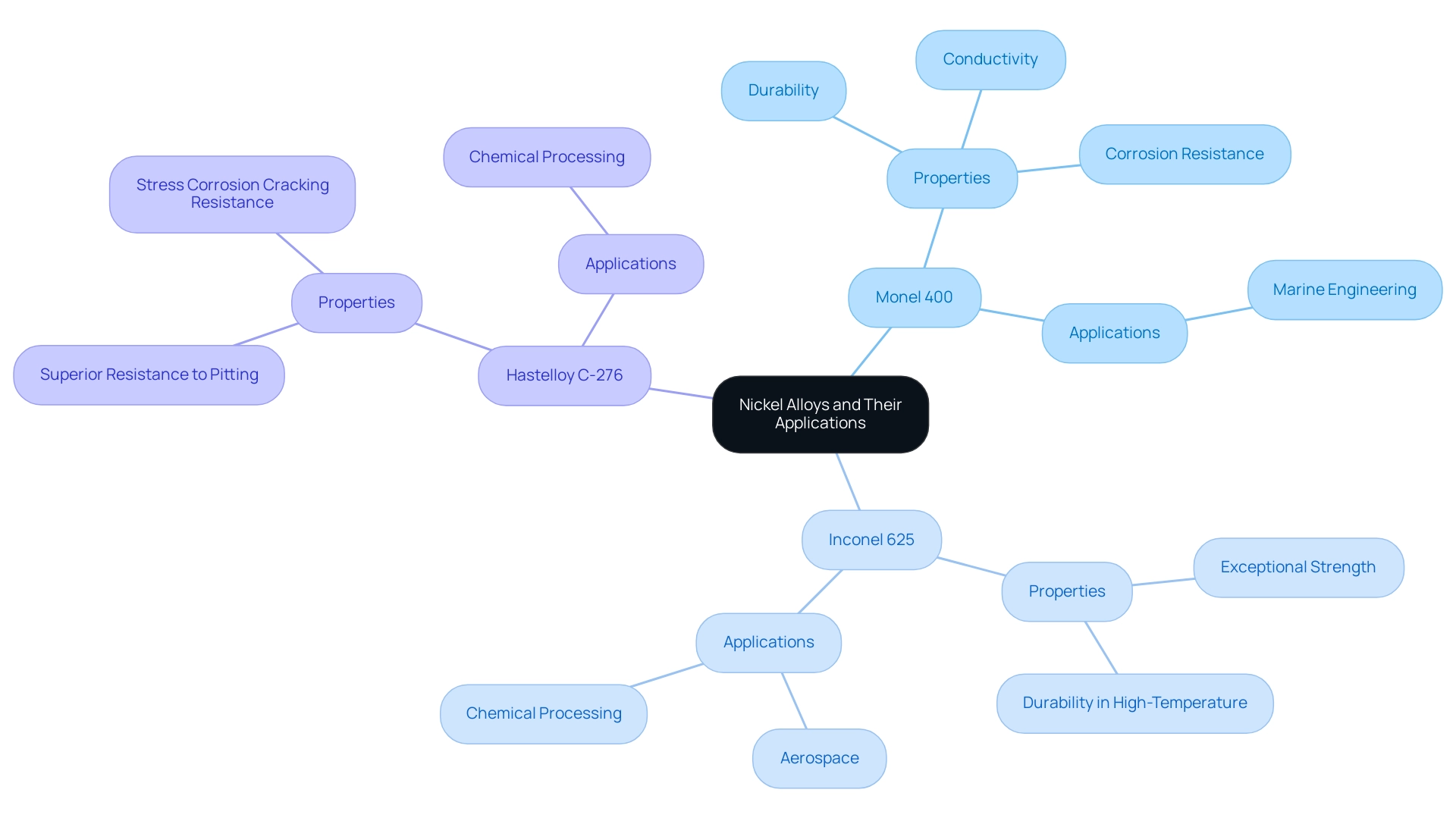
Factors Influencing the Selection of Nickel Alloys
When choosing nickel-based materials, several factors must be considered, including mechanical properties such as tensile strength, yield strength, and ductility. The benefits of particular mixtures, such as copper-based combinations, include:
- Outstanding durability against deterioration in marine settings
- Enhanced thermal and electrical conductivity
- Simplicity of production
Notably, copper nickel mixtures outperform stainless steel in saline or brackish waters due to their superior nickel corrosion resistance.
They also possess antimicrobial properties, making them suitable for applications where hygiene is paramount. Cost plays a significant role in the decision-making process, as pricing can vary widely among different materials; for instance:
- Beryllium Copper Strips are priced at 1,050.00
- Tungsten Copper W80Cu20 is priced at 1,890.00
Environmental factors, including temperature extremes and exposure to corrosive agents, influence the selection of materials, particularly for applications requiring antimicrobial properties.
Compliance with industry standards and regulations is another critical aspect that procurement managers must take into account. By thoroughly assessing these elements, including the distinctive properties of materials such as DOMADIA Molybdenum Iron Composition, which provides remarkable strength and thermal stability, procurement experts can guarantee they choose the most appropriate metal for their specific application.
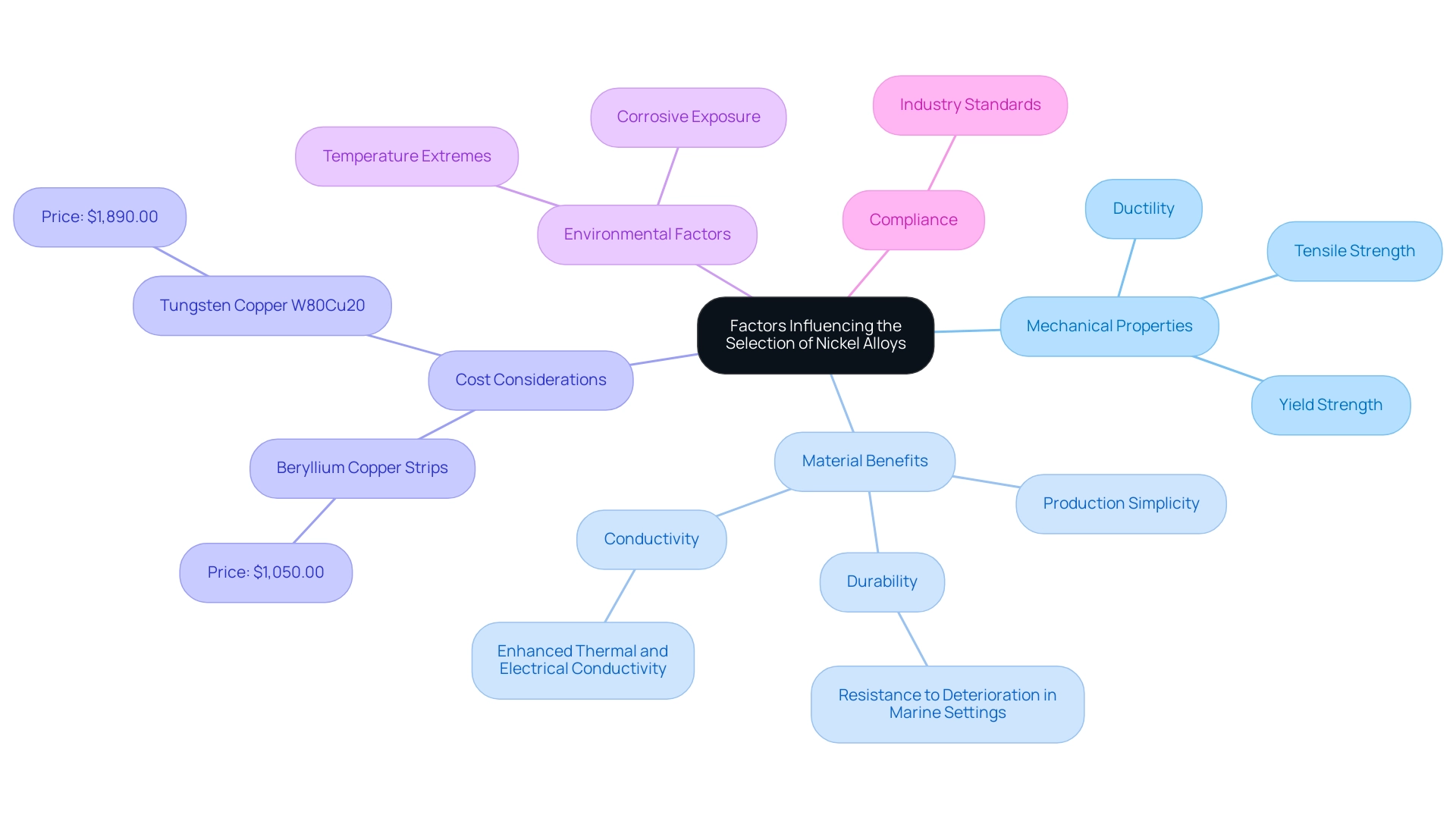
Best Practices for Sourcing Nickel Alloys
To effectively enhance sourcing strategies for metal composites, procurement managers must prioritize the development of strong relationships with reputable suppliers who specialize in high-performance materials. A thorough market analysis is crucial to identify competitive pricing and superior quality options. For context, the historical market sizes for metal mixtures from 2019 to 2023 show a steady increase, with sizes growing from X million in 2019 to Y million in 2023, indicating a strong demand and market potential.
Implementing a structured supplier evaluation process ensures that suppliers consistently meet established standards, thereby securing the quality of procured materials. Regular performance reviews and maintaining transparent communication channels are vital; they not only strengthen partnerships but also enhance the overall procurement process. Furthermore, adopting emerging technologies—such as digitalization, automation, and data analytics—can significantly enhance efficiency and transparency in sourcing metals.
As noted in industry discussions, ‘Emerging trends such as digitalization, automation, artificial intelligence, Internet of Things, and data analytics are reshaping industries.’ By aligning these technological advancements with sourcing strategies, procurement managers can streamline operations and support long-term strategic growth in the metal composites market. Furthermore, grasping regional market dynamics, including fluctuations in demand and supply across North America, Europe, and Asia-Pacific, will offer a more extensive perspective of the metal composites market landscape, which has demonstrated encouraging growth trends from 2019 to 2023 and is anticipated to persist through 2029.
To better align this content with the themes of employee engagement and the importance of non-sparking tools, it could be beneficial to discuss how strong supplier relationships contribute to employee safety in explosive environments or how engaging employees in the procurement process can lead to more innovative sourcing solutions.
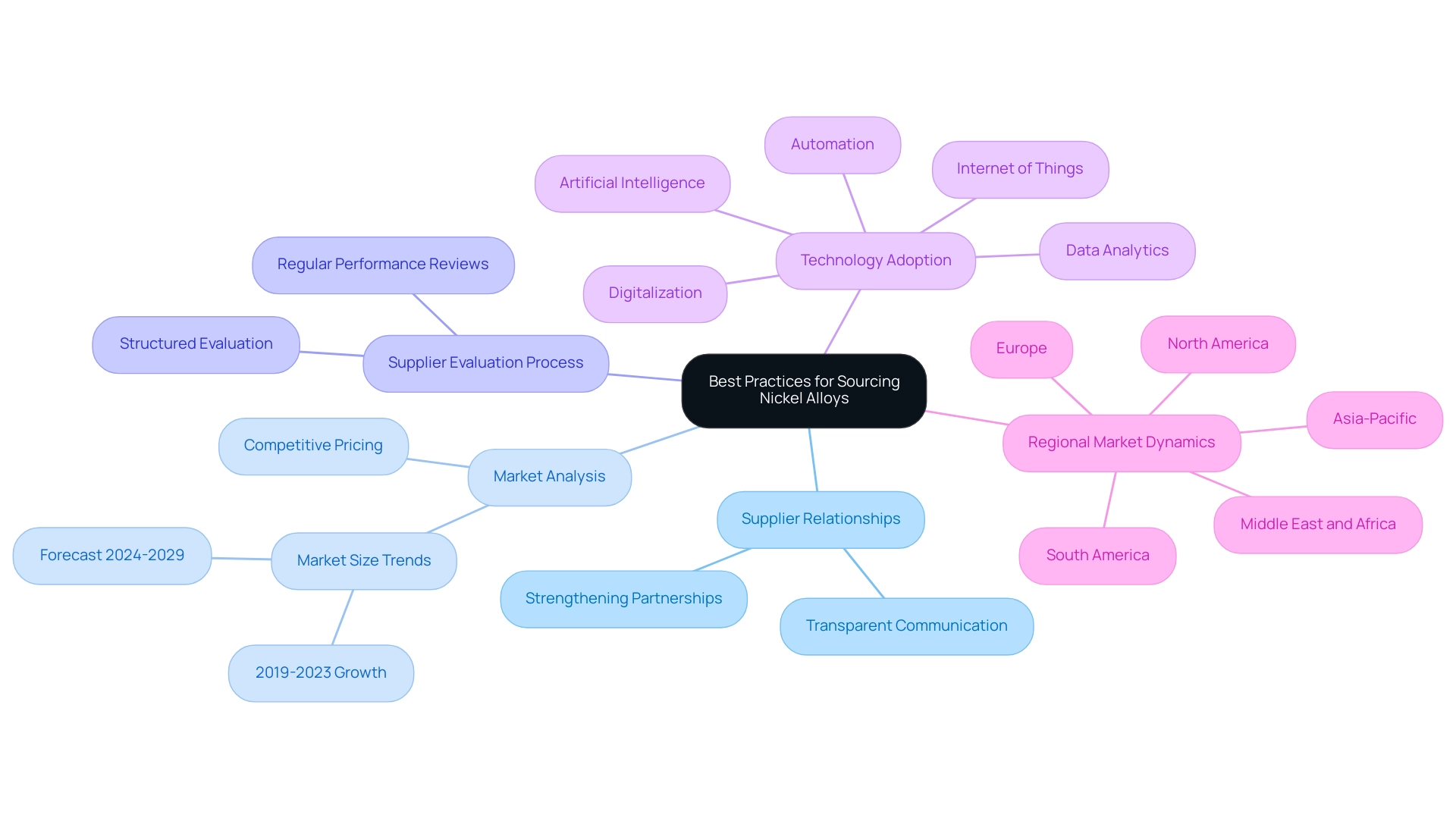
Future Trends in Nickel Alloys and Corrosion Resistance
The future of nickel compositions is likely to be influenced by advancements in material science and engineering, particularly regarding non-sparking tools crucial for safety in explosive environments. Research is ongoing in developing new metal mixtures that enhance nickel corrosion resistance along with improving corrosion durability and mechanical characteristics. This includes the use of mica tape products, such as:
- Mica Insulation Tape
- Mica Sheet Tape
which offer high-temperature resistance and reliable electrical insulation across various applications.
Additionally, sustainability concerns are driving demand for nickel alloys that can be recycled and have lower environmental impacts. Innovations in manufacturing processes, such as additive manufacturing, may also enable the production of more complex shapes and structures without compromising performance. As these trends unfold, procurement managers must remain vigilant and adaptable, ready to incorporate new materials and technologies into their sourcing strategies, including:
- insulation papers
- high-temperature fabrics
- specialized metals from leading suppliers and manufacturers
to maintain competitive advantages.
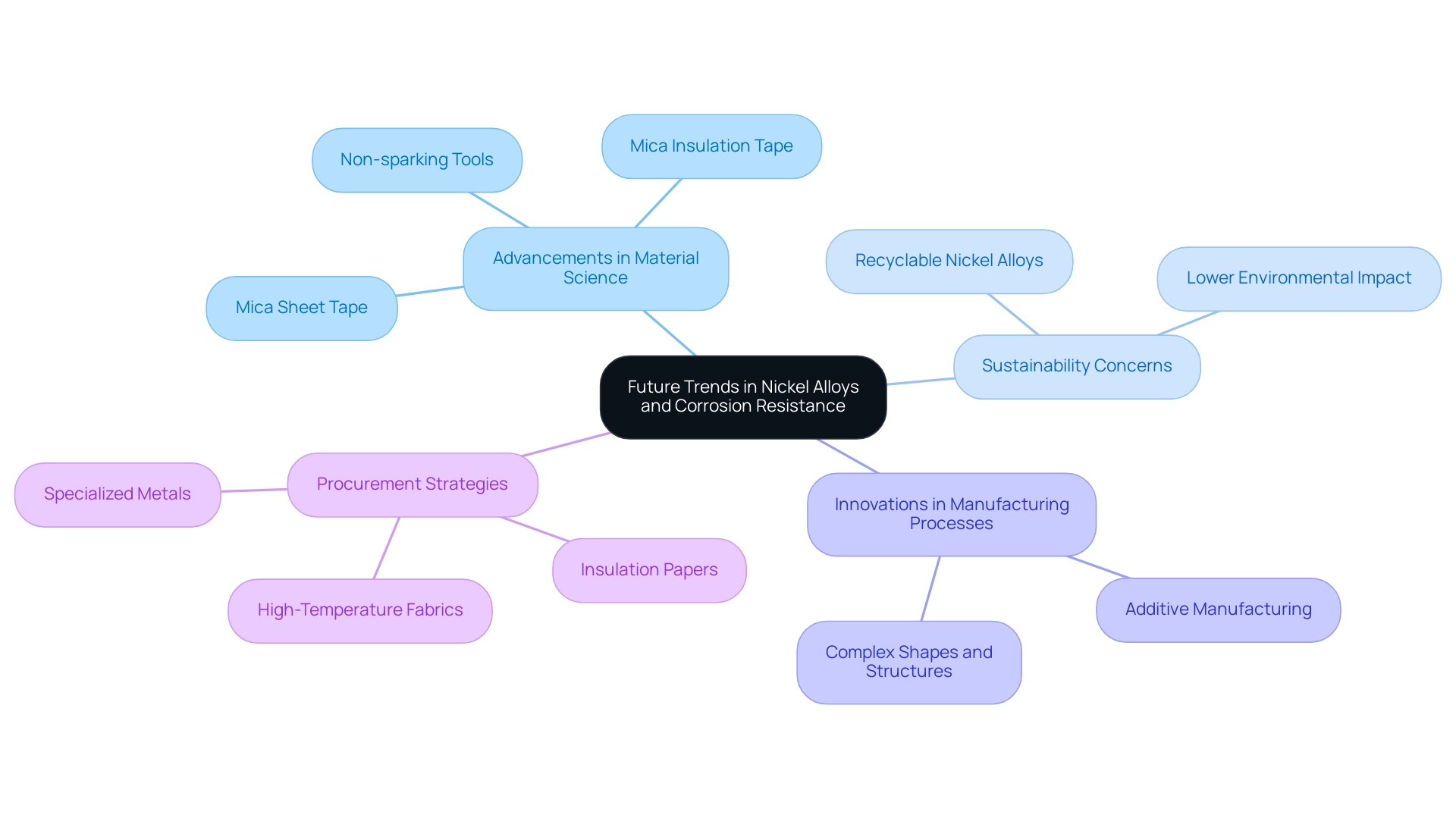
Conclusion
Nickel and its alloys are undeniably vital to modern engineering, offering exceptional properties that cater to a diverse range of applications. From the remarkable corrosion resistance and mechanical strength of Inconel and Monel to the critical role of nickel in industries such as aerospace, marine engineering, and chemical processing, the significance of these materials cannot be overstated. Understanding the unique characteristics of these alloys, along with their specific applications, ensures that procurement professionals can make informed decisions that align with project requirements and industry standards.
As industries continue to evolve, the demand for nickel alloys is projected to rise significantly, emphasizing the importance of strategic procurement practices. Factors such as:
- Mechanical properties
- Environmental considerations
- Compliance with industry regulations
must be meticulously evaluated to select the most appropriate alloy for each application. Furthermore, establishing robust relationships with reputable suppliers and embracing emerging technologies can enhance sourcing strategies, ultimately leading to improved efficiency and product quality.
Looking ahead, the future of nickel alloys is poised for innovation driven by advancements in material science and sustainability. As new compositions and manufacturing processes emerge, procurement managers must remain adaptable and proactive in incorporating these developments into their sourcing strategies. By staying informed about market trends and fostering strong supplier partnerships, organizations can ensure they are well-prepared to meet the challenges and opportunities that lie ahead in the dynamic landscape of nickel alloys.




